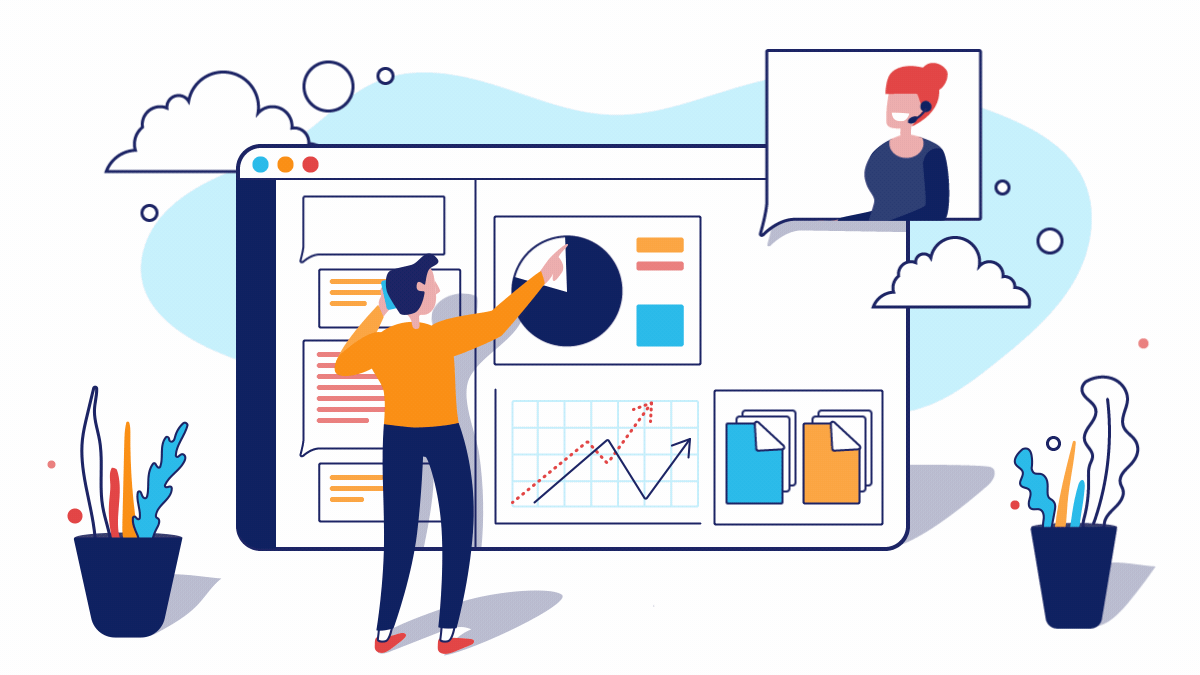How would you describe a failed interaction with your prospects? Maybe something like this?
You: Good morning, this is Ken from CrazyBizy.com. How can I help you today?
Prospect: Mmm, yes. Hello. I called a few minutes ago to ask about your entrepreneur plan. I talked to your colleague. She wasn’t sure, and it’s not on your website, so…
You: Which one of my colleagues? Was it over the phone? Hello? I can’t hear you, sir! Hello!?!?
First impressions matter. Small and medium businesses are constantly struggling to find ways to establish effective communication with their customers. That becomes a real challenge when the information gathered through the customer’s journey is isolated within the different business tools and departments of the organization.
The first interaction between your business and customers often happens through a business phone service. Whether your prospect called your Customer Support Center or your salespeople reached out to a hot lead, you want to make sure your VOIP service works perfectly. Furthermore, you want to be able to gather and properly utilize the data collected in each touchpoint with your customers.
To achieve that goal, your teams must be aligned and your business applications have to communicate between them, starting with your VOIP. Did you know that 64% of business are using cloud apps, with an average of six cloud apps per business? The problem is that these cloud apps don’t talk to each other natively. Let’s look at an efficient way to integrate them.
Effective Customer Engagement: Connect with your team, then with your customer
A 360-degree view of your customers and prospects is the first step toward offering personalized and effective communication. Having a complete picture of your customer when you pick up the VoIP phone translates into an outstanding customer experience. Here are two important points to consider as you build your strategy:
- How do you make sure all your teams have a complete view of your customers? By making sure they have access to a complete and up-to-date database from any device or business tool they are using.
- How do you create that high-quality database? By making sure each one of your teams is gathering and sharing the customer information to which they have access.
Let’s say you’re using RingCentral and Google Contacts across your company. A few desks away, your sales team uses a CRM, the marketing team sends emails through MailChimp, and your accounting department works with accounting software. All these tools collect valuable customer insights: industry, tags, categories, billing information, interests, email address, phone number, and more.
To keep these systems in sync, you’ll find native integrations between RingCentral and other apps, or third-party sync solutions, such as PieSync, which helps you build the workflow between your business-critical apps. PieSync allows you to sync all your contacts or a subset, and to sync one-way or bi-directionally. It’s a way to connect RingCentral contacts with over 160 other business tools and their address books.

An immediate benefit of this type of automation is time savings. A lot of businesses spend hours importing and exporting contacts between apps, and those databases are never really up-to-date. Bi-directional (or two-way) sync implies that whenever you add or modify a contact in one app, it will be automatically up-to-date in the other app, and vice versa. So you’re ensuring the quality of the data and increasing your productivity.
Case study: contact synchronization in action
Maryland realtor Jeff Miller keeps RingCentral and Constant Contact (his company’s email marketing tool) in sync. When he receives a call asking about a property, he can immediately add this prospect’s phone number to RingCentral and even indicate the segment to which that contact belongs, for instance, “Interested in Renting.”
No matter which device he used to answer the call, that information is synced to Constant Contact and automatically added to the right email list (the list of customers who will receive emails with houses for rent). With this automation, Miller also aligns his company’s sales and marketing departments.
“With PieSync we can finally manage customer data efficiently. Because it works in real-time and it connects all of our apps, we know we can always count on up-to-date customer information,” says Miller.

Learn more about the set up and the additional options available.
The bottom line
Creating an outstanding customer experience is not impossible. Even with limited resources, companies with a well-defined data strategy can outperform their competitors with effective communication. The key is giving your different teams a complete view of your customer’s journey.
In that context, data is your most precious asset and you can improve its quality by having your apps “talking to each other.” Also, remember to keep your different teams aligned! You can do that by giving them access to a 360-degree view of your customers from any device and/or application they are using.
View the RingCentral App Gallery:
https://www.ringcentral.com/apps/
Watch how PieSync works
About the Author: Claudia Martinez Monsanto is a marketing and communications expert. Currently, she helps the PieSync marketing and communications team by creating valuable content, such as blogs, case studies, videos, and graphics. She is also a friendly voice for social media.
Originally published May 09, 2019, updated Jul 25, 2024





